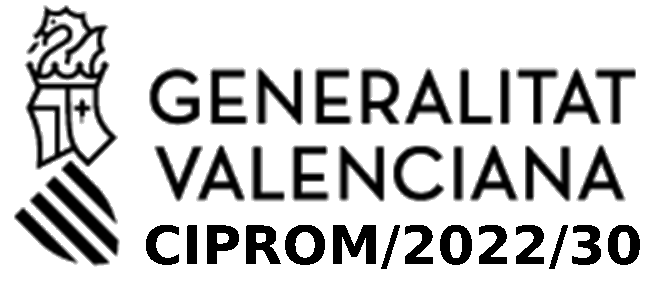Our Services
Optical Metrology
Exhaustive quality assessments of intraocular lenses (IOLs)
We can measure monofocal, multifocal, spherical and aspherical designs, both in air and in a model eye according to the requirements of the International Standard UNE-EN ISO 11979-9.
We have developed an optoelectronic setup for the assessment of the optical quality of multifocal intraocular lenses (MIOLs) under monochromatic and polychromatic illumination. The system provides the Modulation Transfer Function (MTF) and the Point Spread Function (PSF) of the lens under test for different axial positions of an object in a totally automated procedure. The setup also admits different artificial corneas, with or without aberrations, and different pupil diameters.
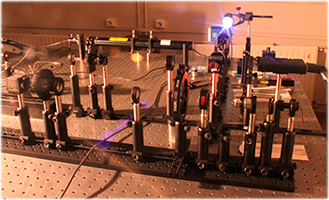
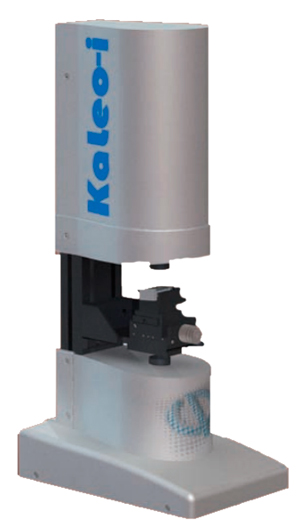
In our labs the optical quality of the IOLs can also be evaluated with a commercial setup (Kaleo I, Phasics S.A.) which is based on the lateral shearing interferometry technique. In it a collimated beam propagates through the lens and the transmitted wavefront is analyzed with a modified Hartman test. From the aberration map the Zernike coefficients, the Modulation Transfer Function (MTF) and the Point Spread Point (PSF) can be obtained. According to the European Standard, the MTF for multifocal lenses can be evaluated for the different foci with a variable aperture and different frequencies. This system can also give a curvature map of the lens surface.
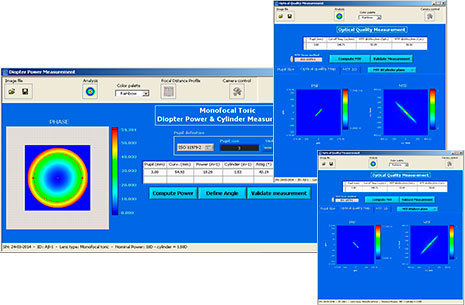
Contact lenses characterization. Spherical, aspherical, toric, and multifocal.
We have specific equipment to characterize the optical properties of soft and rigid and semi-rigid Contact Lenses (CL).
Specific Equipment

NIMO TR1504 system (Lambda X S.A.), employs the phase shifting schlieren” (PSS) technique for the characterization and control of contact lenses. This system offers the highest resolution of any commercially available power mapping instrument .
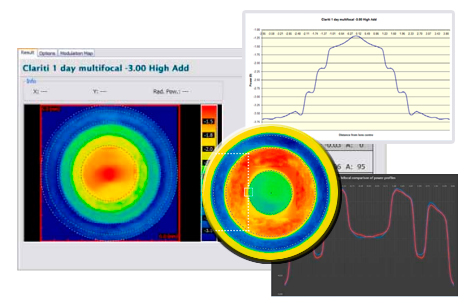
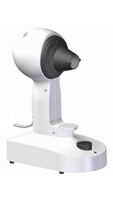
With the contact lenses analyzer kit of the Keratron PICCOLO (Optikon) corneal topographer we can measure the curvature of the front and back surfaces of rigid contact lenses.

Intraocular Lenses and Contact Lenses Design
Our group has patented designs of multifocal diffractive-refractive ophthalmic optical elements. Such designs of IOLs and Contact Lenses are based on different aperiodic structures. We have developed GUI software that allows a real-time analysis of the designed lenses properties. Several design parameters of the lenses can be varied allowing fast customized designs.
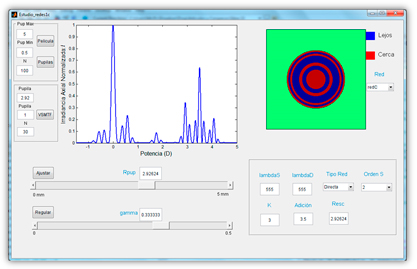
To assess the optical performance of these visual compensations we use the Zemax Optic-Studio software. This powerful ray tracing software offers the possibility to analyze the optical performance of the compensated visual system.

Software Development
Management Data of Commercial Devices used in Vision Sciences
The software of optometric and ophthalmological commercial instruments is designed to complain the needs of the clinical practice. Therefore, this software somewhat limited and it cannot be used to get and process automatically big amounts of data and to perform statistical analyses. To overcome this limitation we have developed several Matlab Applications to retrieve and process data from instruments we have in our labs, such as: Optikon Videokeratographers (Keratron Scout or Keratron Piccolo) and Grand Seiko WAM-5500 open field Auto Refractor/Keratometer.
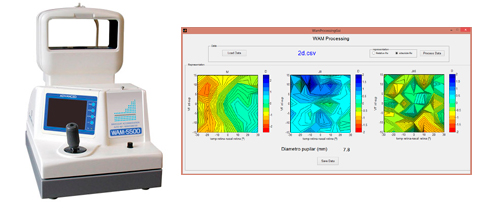
Development and Validation of tests to measure Visual Performance
Our team has developed and validated several visual tests in the form of apps for tablet devices (iPad or Android). The advantage of using these devices is that they offer the possibility to perform standardized visual screenings. With these apps we can measure Visual acuity, Contrast sensitivity Function and Stereopsis.
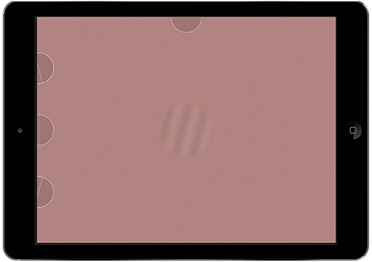
Optical Trapping System
In our laboratory, we have an holographic optical tweezers system. This system allows the incorporation of diffractive optic elements (DOEs) implemented on a crystal display spatial light modulator (SML). The optical tweezers feature a high-intensity laser at λ=1064 nm, which allows the development of experimentation for applications in biophysics or in the manipulation of distinct particles. The use of diffractive lenses increases the flexibility of the optical tweezers system since it is possible to modify in real-time the focusing characteristics of the used DOE and, therefore, the formation of the optical traps on the trapping target. The research group is actively developing new diffractive lenses to increase the trapping characteristics of the optical tweezers system.
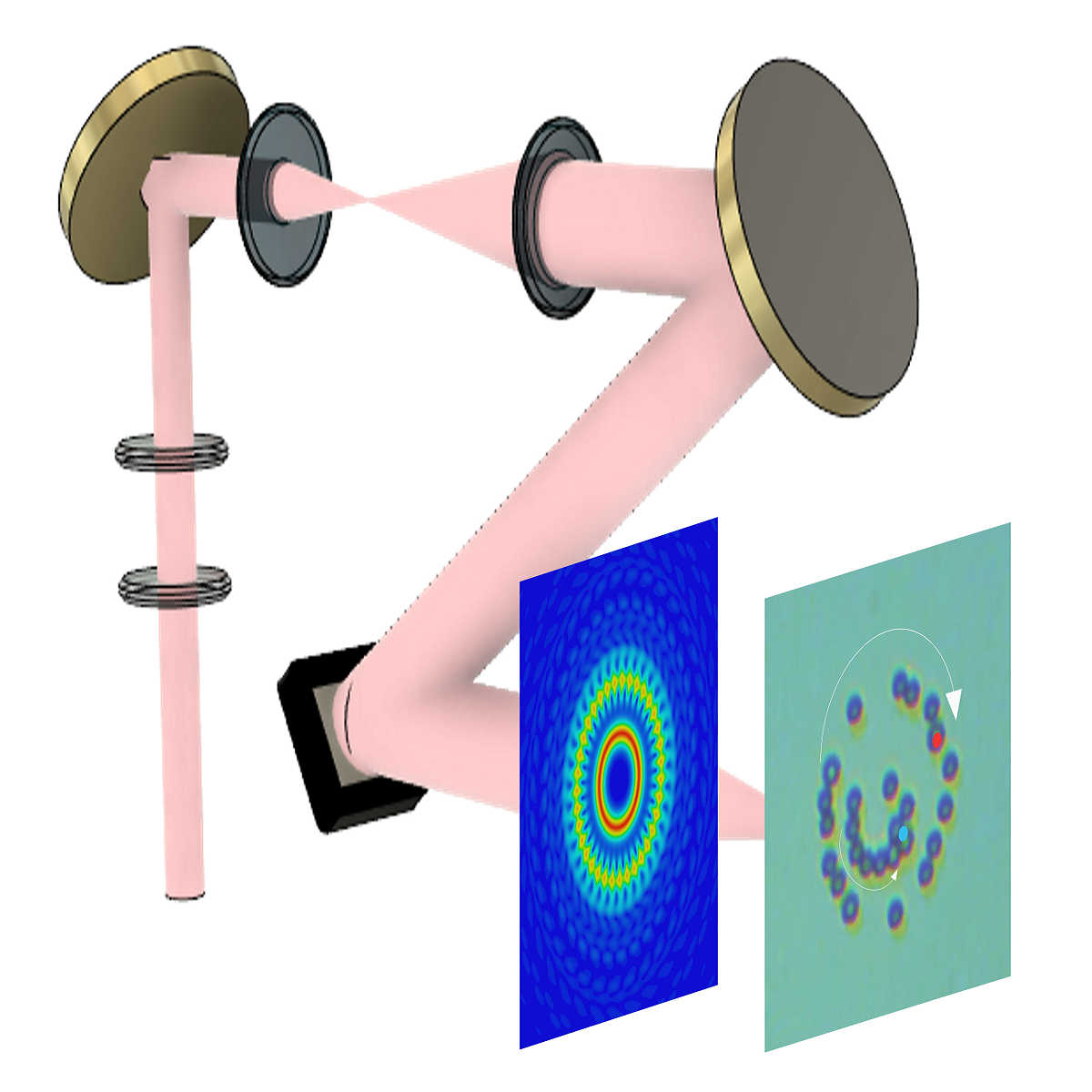
Need more information?
Please contact us or submit a Request for Services.


